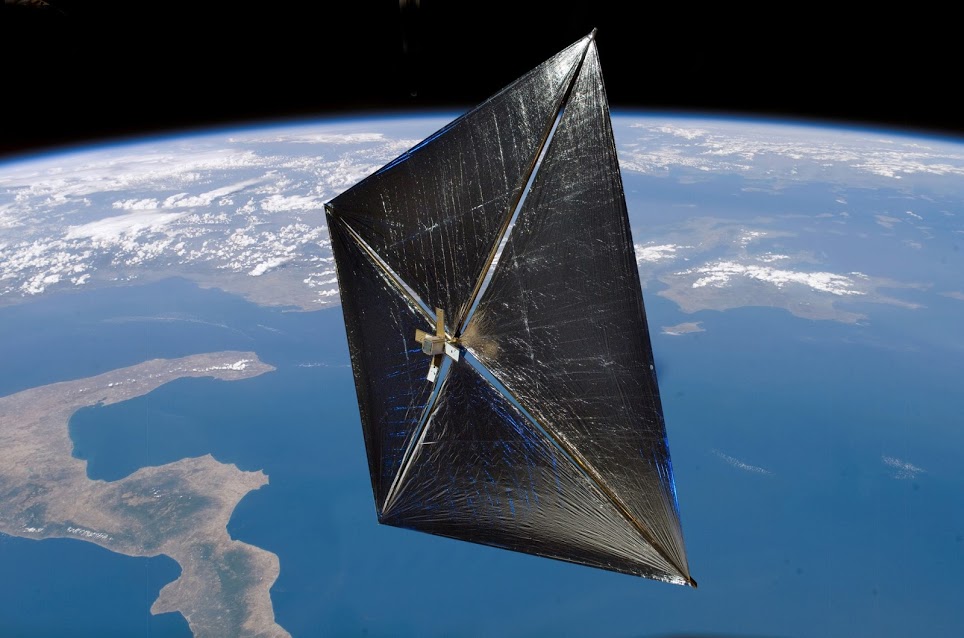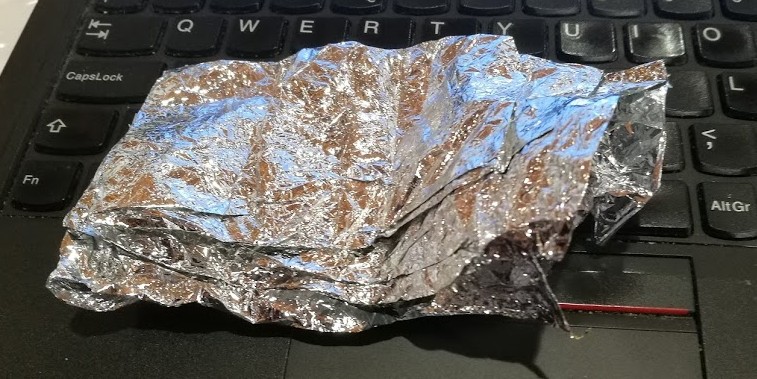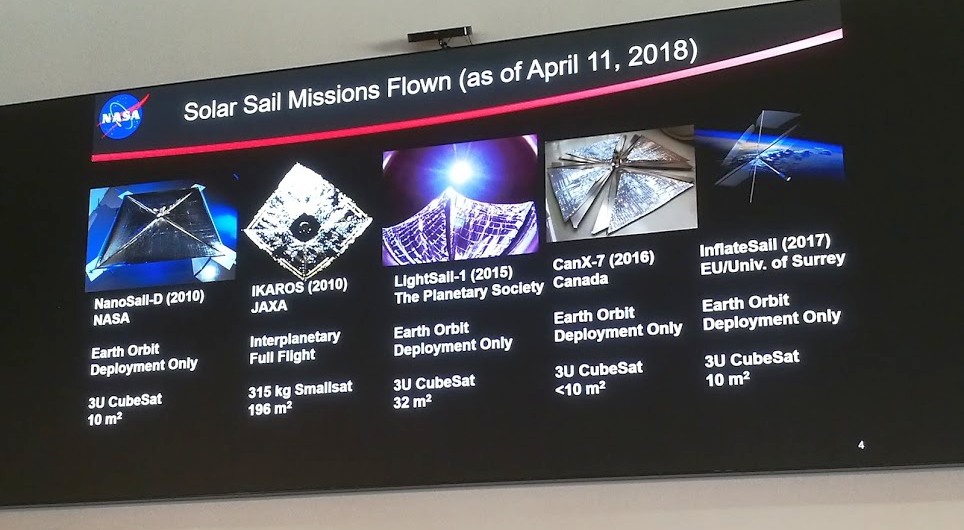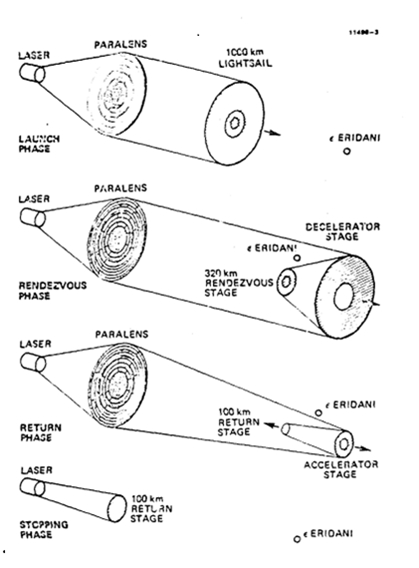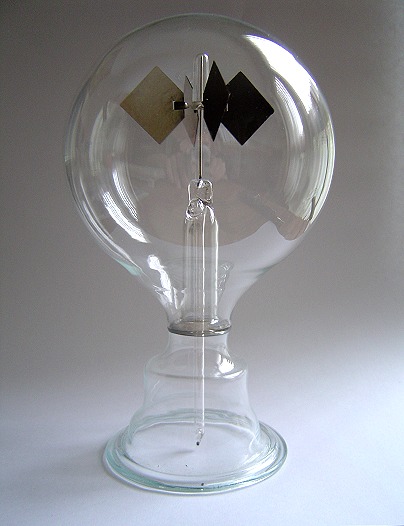#FridayPhysicsFun – Today I have been thinking about light sails. The propellantless, green way of getting from point A to B (often rather slowly).
This is a *classic* idea. Kepler suggested in a letter to Galileo 1610: "Provide ships or sails adapted to the heavenly breezes, and there will be some who will brave even that void." Perhaps it was inspired by his observation that comet tails point away from the sun.
The basic idea is to bounce light off a reflective thin sheet. Since light carries momentum, this will exert pressure on the sail, pushing it normal to its direction.
https://en.wikipedia.org/wiki/Radiation_pressure">https://en.wikipedia.org/wiki/Radi...
https://en.wikipedia.org/wiki/Radiation_pressure">https://en.wikipedia.org/wiki/Radi...
The pressure is not big: 1361 W/m^2 light (near Earth in space) gives 9.08 microPascal. On Earth that would be enough to lift the weight of a fruit fly if it was standing on the sheet.
The problem is the weight of the sheet. The sun radiates, but it also pulls the sail with its gravity. Since the light intensity falls off with the square of the distance just like gravity they partially cancel for a sail pointed towards the sun.
If the sail is heavier than 1.53 gram per square meter gravity wins, if it is lighter it will float away. If they are exactly balanced you get a sheet that just hangs there – just what I might want to build a lightweight Dyson sphere from.
What if you tilt the sail? Then you get a bit less outward push, but you also get a sideways push accelerating the sail. A sail parallel to the sunlight will just orbit in an elliptic orbit around the sun like anything else, but in between, you can both speed up and slow down.
This is also why heavier sails still are useful: they can pick up speed and spiral outwards. One can do a lot of orbital acrobatics this way. This is *awesome* because one can avoid the dreadful rocket equation and the need for fuel. But the accelerations are small.
Designing sail trajectories looks like a fun and complex problem. I am myself curious about using neural networks to do it. https://www.hindawi.com/journals/ddns/2018/6916848/">https://www.hindawi.com/journals/... https://core.ac.uk/download/pdf/206589652.pdf">https://core.ac.uk/download/... https://arxiv.org/ftp/arxiv/papers/1901/1901.02172.pdf">https://arxiv.org/ftp/arxiv...
The problem is also making thin enough films. The dream material would be graphene with some metal coating – light, strong, and reflects all wavelengths. We are not there yet. https://www.esa.int/ESA_Multimedia/Images/2020/05/Graphene_light_sail">https://www.esa.int/ESA_Multi...
This is some actual sheet material, mylar plastic with a thin aluminum coating. It felt very light and fragile (yet survived being passed around the audience). Making sheets in microgravity would be even better. Avoiding tears requires clever design.
Right now the Planetary Society& #39;s crowdfunded LightSail II is up there. https://www.planetary.org/sci-tech/lightsail">https://www.planetary.org/sci-tech/...
Solar sails are nice because they have 24-7 power, but it is rather weak in the outer solar system, plus it is always directed away from the sun. But light is light: one could use a big laser to push a sail too.
The idea is due to Robert Forward, and was written up by Marx 1966. Unfortunately, the paper contained a major mistake, leading to a long-lasting controversy about the potential efficiency of laser-propelled sails. https://www.nature.com/articles/211022a0.pdf?origin=ppub">https://www.nature.com/articles/...
Laser pushing has an extra advantage: sunlight is a blackbody mix of wavelengths, but laser light has just one. Make a dielectric film with exactly the right thickness and you get a 100% reflective surface for that wavelength, and it can be some very light material.
This is the idea behind Breakthrough Starshot, aiming at sending tiny probes using laser-pushed sails at up to 20% of lightspeed to stars like Proxima Centauri. https://breakthroughinitiatives.org/concept/3 ">https://breakthroughinitiatives.org/concept/3...
Interstellar sails have another problem: how do you slow down? Sure, sending a probe past another solar system is awesome, but spending just a few hours there after decades of travel is a bit anticlimactic.
Forward proposed a cool solution: detach the outer rim of your sail, and have the beam from Earth reflect onto the middle part, slowing it. Unfortunately you need a *big* laser to do it over lightyear distances. https://www.centauri-dreams.org/2017/02/02/proxima-centauri-the-problem-of-arrival/">https://www.centauri-dreams.org/2017/02/0...
It turns out that starlight from the destination star can change velocity quite a bit. A 1g/m^2 sail approaching Alpha Centari A can slow down by 1200 km/s, and a graphene sail 12900 km/s. https://arxiv.org/abs/1701.08803 ">https://arxiv.org/abs/1701....
But even better, one can also do a gravitational assist maneuver to approach Alpha Centauri B for extra slowing, and then go to Proxima Centauri. Or use the "Sirius afterburner" to speed up. https://arxiv.org/abs/1704.03871 ">https://arxiv.org/abs/1704....
Very fast sails would also see starlight blueshifted and get stronger slowing, but the relativistic effect is too small to really matter.
Light pressure leads to a lot of other fun effects, like the YORP effect where asteroids can be spun up by sunlight (and, as the sun turns into a red giant in the future, perhaps spin apart).
https://en.wikipedia.org/wiki/Yarkovsky%E2%80%93O%27Keefe%E2%80%93Radzievskii%E2%80%93Paddack_effect">https://en.wikipedia.org/wiki/Yark...
https://en.wikipedia.org/wiki/Yarkovsky%E2%80%93O%27Keefe%E2%80%93Radzievskii%E2%80%93Paddack_effect">https://en.wikipedia.org/wiki/Yark...
The Crookes radiometer scientific toy *looks* like it turns because of radiation pressure... but it turns the wrong way with the silver side going towards light! It actually works by giving extra velocity to air molecules on the dark side. https://en.wikipedia.org/wiki/Crookes_radiometer">https://en.wikipedia.org/wiki/Croo...

 Read on Twitter
Read on Twitter